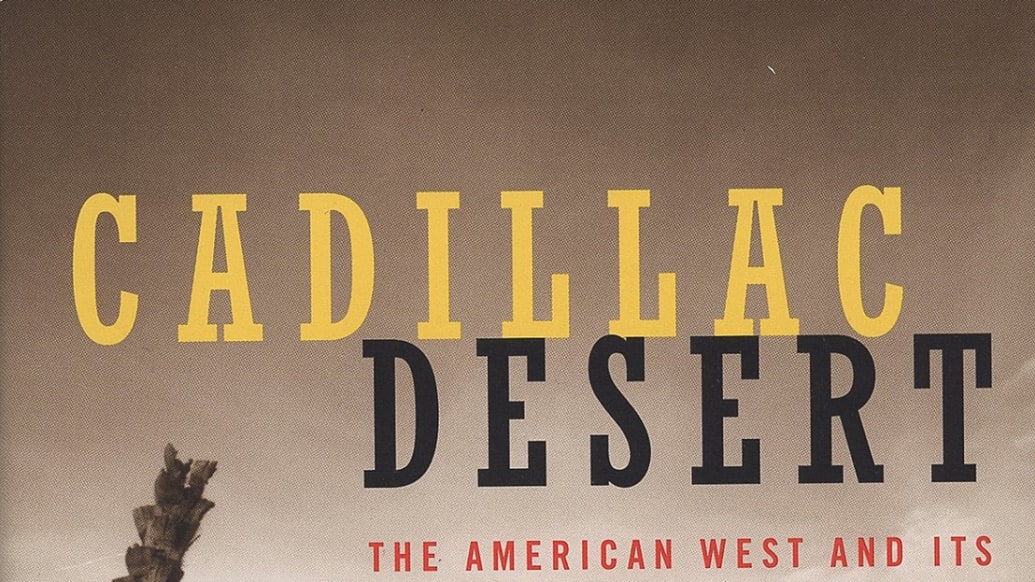Los Angeles and Phoenix would not exist without it. Nor would the Hoover Dam or the fabled agricultural production of California. Probably not one U.S. citizen in a hundred knows its name, but then it has one of the dullest names imaginable, almost as if its creators intended to discourage the public and the press from paying attention to it.
But dull name or not, the U.S. Bureau of Reclamation has done more to shape the water supply, landscape, and economy of the modern American West than any other entity, public or private.
Today, California and much of the West are enduring the fourth year of a record drought that has triggered unprecedented cutbacks in water use and unabashed fears for the region’s future. The crisis has also triggered much talk about who, or what, is to blame. Environmentalists point fingers at global warming and greedy agribusinesses that insist on growing thirsty crops in an arid climate; right-wingers assail feckless Washington bureaucrats and laws that give fish priority over people. But read the history of how the West—which, after all, is largely desert and semi-desert—obtained the cheap, abundant water that its residents now take for granted and a different picture emerges. As much as any other factor, it is the legacy of the Bureau of Reclamation—this federal agency’s decades of building hundreds of dams and canals to move massive amounts of water vast distances to serve human desires—that has left the West so vulnerable to the current drought.
No book illuminates this history better than Cadillac Desert: The American West and Its Disappearing Water, by the late Marc Reisner. A magisterial mix of first-hand reporting, judicious background research, and old-fashioned (but not strident) moral outrage, Cadillac Desert was published in 1986 and updated in 1993. The book’s great value is to illuminate just how unnatural and precarious the West’s system of water supply is and how the system’s design and operation has been driven from the beginning by big-money politics and macho rivalries (particularly between the bureau and the Army Corps of Engineers) more than by any concern for the common good, much less for healthy ecosystems.

Reisner does not hide his environmental sympathies, but he fairly represents all sides, even as his profiles of key villains are deliciously revealing. William Mulholland, the hard-driving engineer who tricked and ruined countless small towns and farmers to bring water from the distant Colorado River to Los Angeles in the ’20s, once encountered the director of the National Park Service at a formal dinner. Mulholland asked if the director had ever visited Yosemite. Yes, the director said; in fact, he was the park’s superintendent. “A beautiful park,” Mulholland purred, “majestic. Do you want to know what I would do with it?” The director made the mistake of answering yes. “I’d hire a dozen of the best photographers in the world,” Mulholland replied, and have them live in the park for a year and “capture all the colors, all the waterfalls, all the snow … and especially the rivers.” The resulting photographs would be published in the nation’s leading magazines and displayed in museums coast to coast. And then, Mulholland concluded “with a vulpine grin … ‘I’d go in there and build a dam from one side of that valley to the other and stop the goddamned waste.’”
Like many classics, Cadillac Desert is by no means perfect. The book is long-winded (the 1993 paperback edition is 518 pages long) and occasionally scampers down less-than-rewarding rabbit trails. One can say the same, however, about Moby Dick: did Melville really need to include page after page about whaling gear and technique? Remove such passages, though, and Moby Dick loses something; its quirks and obsessions are indivisible from its greatness. Exactly so with Cadillac Desert: its originality and insights far exceed its shortcomings. The book is the essential background reading for anyone who cares about the drought ravaging the West and the region’s prospects for changing course before it’s too late.
Partly because Cadillac Desert was published more than 20 years ago, however, one should augment it with a much shorter book that was released earlier this year: Deadbeat Dams: Why We Should Abolish the U.S. Bureau of Reclamation and Tear Down Glen Canyon Dam. Written by a former head of the bureau, Daniel P. Beard, Deadbeat Dams is a take-no-prisoners, insider’s tell-all about the extraordinary scandals—political, economic, ecological—that have permeated the bureau for decades. As his sub-title proclaims, Beard does not favor piecemeal reforms: he advocates outright abolition of the agency he headed. The Bureau of Reclamation has “outlived whatever usefulness it once had,” he writes; eliminating it would save taxpayers huge sums of money and make possible a much-needed shift to fair and rational water policy in the West.
The key point that unites Deadbeat Dams and Cadillac Desert is that politics and money, not science or common sense, are what have always guided water policymaking in the West. Beard quotes one of Reisner’s signature formulations: “In the West, it is said, water flows uphill towards money.” It literally does so in California, where water from the relatively verdant north of the state is transported south and then pumped up and over the Tehachapi Mountains to irrigate corporate farms in the San Joaquin Valley. And who pays for this stupendous engineering feat? The taxpayer, of course, thanks to sweetheart deals hatched in back rooms and rammed through state and federal legislatures by lawmakers eager to demonstrate that they were on the side of “progress.”
When President Theodore Roosevelt pushed the Reclamation Act through Congress in 1902, the stated goal of federal policy was to help populate and develop the West by providing irrigation water to small-scale farmers. Almost immediately, however, Reisner documents, the federal bureaucracy “found itself working on behalf of the wealthy and powerful.” The best-known instance, immortalized in the Hollywood movie Chinatown, was Mulholland’s diversion of water from the distant Owens Valley to fast-growing Los Angeles. But dozens of equally brazen episodes followed, and Beard exposes how they continue to this day.
In California, the current drought has finally brought attention to the fact that agriculture uses 80 percent of the state’s developed water. Some have questioned whether a sector that accounts for a mere 2 percent of California’s economy should be guzzling so much of its water, especially in this time of scarcity. But the real scandal, Beard makes clear—and the reason the agricultural sector can afford to use so much water—is that the price of its water is subsidized to an astonishing degree by the taxpayers of the United States.
The most egregious example is the Westlands Water District, an arid but fertile area southwest of Fresno, where 600 farming operations are guaranteed as much as $110 million worth of subsidized water every year. Beard calls it “the most profitable arrangement for any water district in America.” The recipients are large-scale corporate farms, many of whom fatten their subsidy checks by creating “paper farms.” These legal fictions derive from the historical fact that federal law originally restricted water subsidies to relatively small, 160 acre farms, in keeping with the Reclamation Act’s mandate to aid small-scale farming. In the ’80s, however, lobbyists for Westlands got the Reagan administration to increase the limit to 960 acres. But Big Ag, as it’s known in California, chafed beneath even this expanded definition of a “small farm,” so they devised paper farms. These are huge operations that in reality encompass thousands of acres but on paper are divided up and legally registered as individual farms of 960 acres or smaller in order to claim the subsidized water.
It is this radically underpriced water that makes possible the dubious but lucrative practice of growing more and more almonds, alfalfa, and other notoriously thirsty crops in the desert otherwise known as California’s Central Valley. Scientific experts are virtually unanimous in saying that water is unrealistically priced in California; prices must be raised to bring consumption in line with supply over the long term. The current system, with its highly political prices, encourages absurd waste of water and the economic and ecological damages that result. “Alfalfa irrigation is the single largest use of water in California,” writes Beard. “We think nothing of drying up rivers, killing fish, and destroying tourism so a hobby farmer can grow hay for his daughter’s horse.”
These and dozens of other examples amount to “socialism for the rich,” Reisner and Beard contend, and both Republican and Democratic lawmakers have been complicit for more than a century. Especially galling is how the system’s beneficiaries seem to consider such largesse their rightful due. What Beard calls “The Water Nobility”—an unofficial collection of politicians, lawyers, farmers, engineers, and city officials throughout the West—were once “grateful recipients of a federal program, but at some point they began to view the benefits as an entitlement, even a birthright. They came to believe that they should receive federal funds and resources in perpetuity.”
The spirit of Cadillac Desert suggests that if Marc Reisner were alive today, he would applaud Beard for updating his analysis and second Beard’s call “to stop catering to the Water Nobility.” Instead, the region’s leaders and their partners in Washington should rely on solid science, value financial prudence, and apply common sense. If they do, they will recognize what water experts in California (such as the world-class Pacific Institute in Oakland) have been documenting for years: the smartest, cheapest, most sustainable response to water scarcity is to use water more efficiently. This requires, among other things, phasing out subsidies that positively encourage waste. Before spending billions of dollars on a desalinization plant to make ocean water drinkable, as San Diego is now doing, slash the subsidies that make rampant waste of water financially lucrative. What taxpayer would disagree?
The Water Nobility will of course resist such efforts, but Beard cites an intriguing precedent. In the ’90s it became clear that the post-Cold War U.S. no longer needed so many military bases; local opposition to closing bases, however, was bipartisan and ferocious. Confounding ideological friends and foes alike, arch conservative Representative Dick Armey devised a solution: have the president appoint an independent commission to investigate and compile a list of bases that should be eliminated. The president then had to accept or reject the list in its entirety, as did Congress; if Congress did not act, the list became law. The process gave lawmakers political cover to do what was necessary, dozens of bases were closed, and the nation saved hundreds of billions of dollars.
The current water system of California and the West is similarly outdated; built in the 20th century, often based on 19th century laws and assumptions, it is no match for 21st century realities of climate change, population growth, and consumerism. Reform is imperative. Happily, Cadillac Desert and Deadbeat Dams show that reform is also, at least on paper, straightforward. The challenge, as usual, is to muster the political force to overturn prevailing practices in favor of alternatives that serve not the few but the many, including the rivers, streams, soil, and other natural systems without which we will perish.

